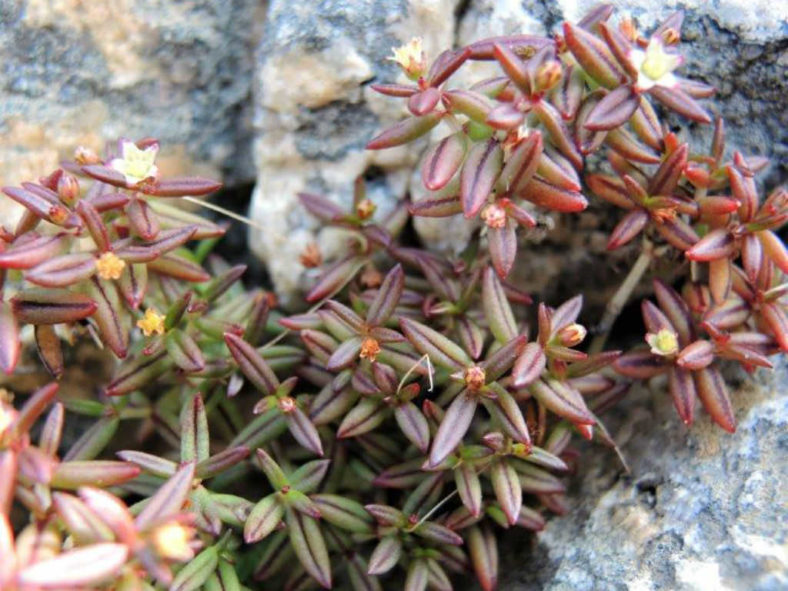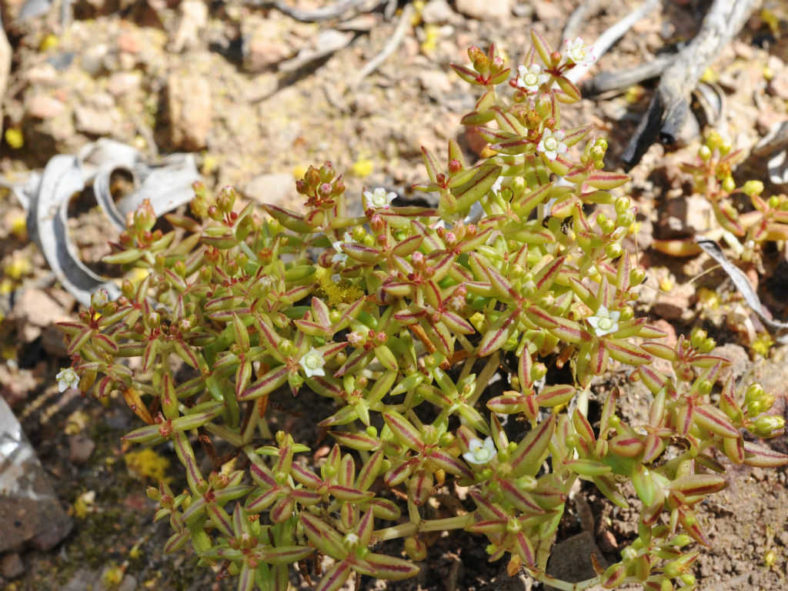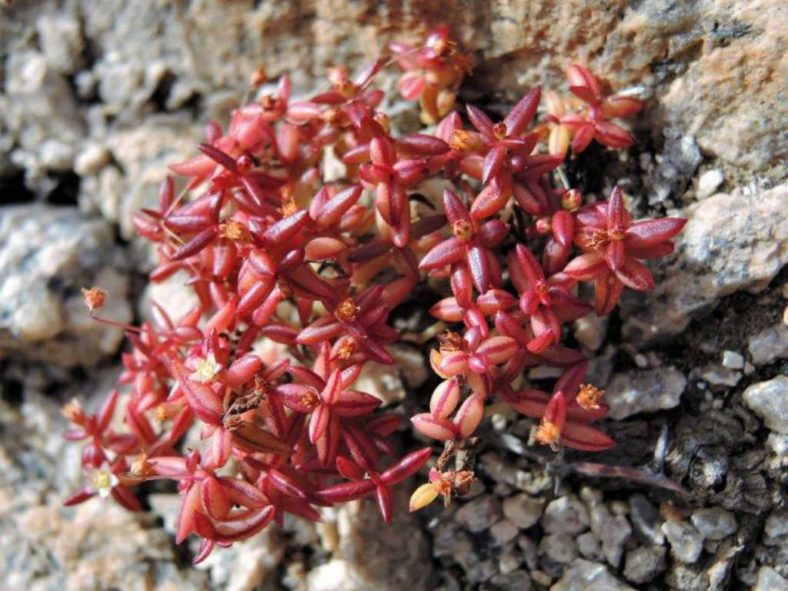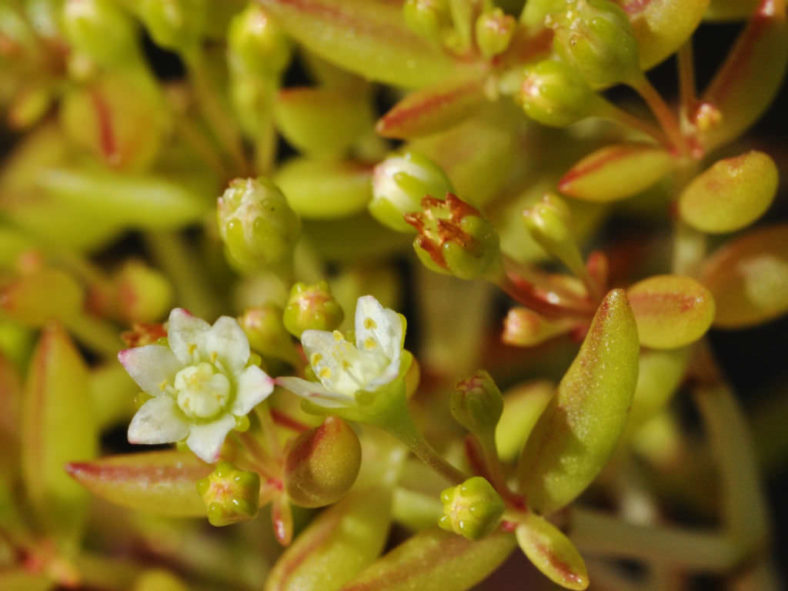Scientific Name
Crassula expansa Aiton
Synonym(s)
Crassula expansa subsp. expansa, Crassula albicaulis, Crassula parviflora, Crassula prostrata, Sedum expansum
Scientific Classification
Family: Crassulaceae
Subfamily: Crassuloideae
Genus: Crassula
Description
Crassula expansa is a mat-forming succulent with glabrous green to reddish, branching stems and fleshy, green leaves, often with reddish margins. It grows up to 2.4 inches (6 cm) tall with a spread of 20 inches (50 cm). The stems are decumbent or rarely scrambling and sometimes rooting at the nodes. The leaves are obovate to linear-obovate or rarely nearly terete, with a flat upper and convex lower surface.
The solitary flowers are white, often tinged with red.

Hardiness
USDA hardiness zones 9b to 11b: from 25 °F (−3.9 °C) to 50 °F (+10 °C).
How to Grow and Care
Crassulas are easy to grow but susceptible to mealy bugs and fungal diseases. Overwatering is sure to be fatal, as with all succulents, so err on the side of too dry rather than too wet. Never let your plant sit in water. If you water from beneath by letting the plant sit in a saucer of water, ensure that you pour off any excess water after a few minutes.
These succulents are generally started by division, offsets, or leaf cuttings. Crassulas can be easily propagated from a single leaf. Sprout leaves by placing them into a potting mix for succulents, then cover the dish until they sprout.
Repot as needed, preferably during the warm season. To repot your Crassula, ensure the soil is dry before repotting, then gently remove the pot. Knock away the old soil from the roots, removing any rotted or dead roots. Treat any cuts with a fungicide. Place the plant in its new pot and backfill it with potting soil, spreading the roots as you repot. Leave the plant dry for a week or so, then begin to water lightly to reduce the risk of root rot.
See more at How to Grow and Care for Crassula.
Origin
Crassula expansa is native to South Africa.
Subspecies
Links
- Back to genus Crassula
- Succupedia: Browse succulents by Scientific Name, Common Name, Genus, Family, USDA Hardiness Zone, Origin, or cacti by Genus
Photo Gallery
Click on a photo to see a larger version.


